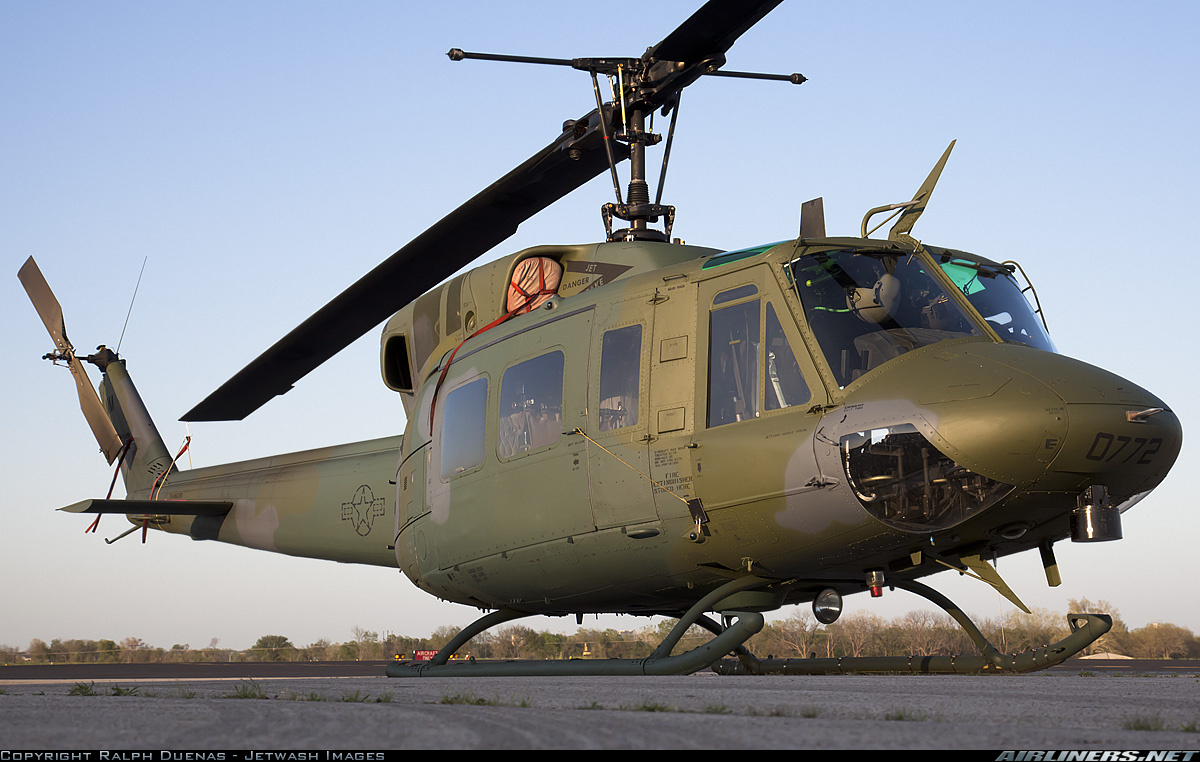
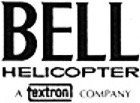
Also known as the “Twin Huey,” the medium-lift helicopter is a two-engine version of the Bell Model 205 (UH-1H). Originally developed for the Canadian Forces as the Bell Model 212, the UH-1N is powered by a Pratt & Whitney T400-CP-400 (the military designation for the commercial PT6T-3 “Twin-Pac”) which consists of two PT6 turboshaft engines mated to a combining gearbox to drive a single output shaft to the helicopter’s main transmission. The combined unit can produce a maximum 1,800 shaft horsepower. If one engine fails, the remaining engine can operate at 900 shaft horsepower for 30 minutes. The T400 is de-rated to the main transmission limit of 1,290 shaft horsepower.
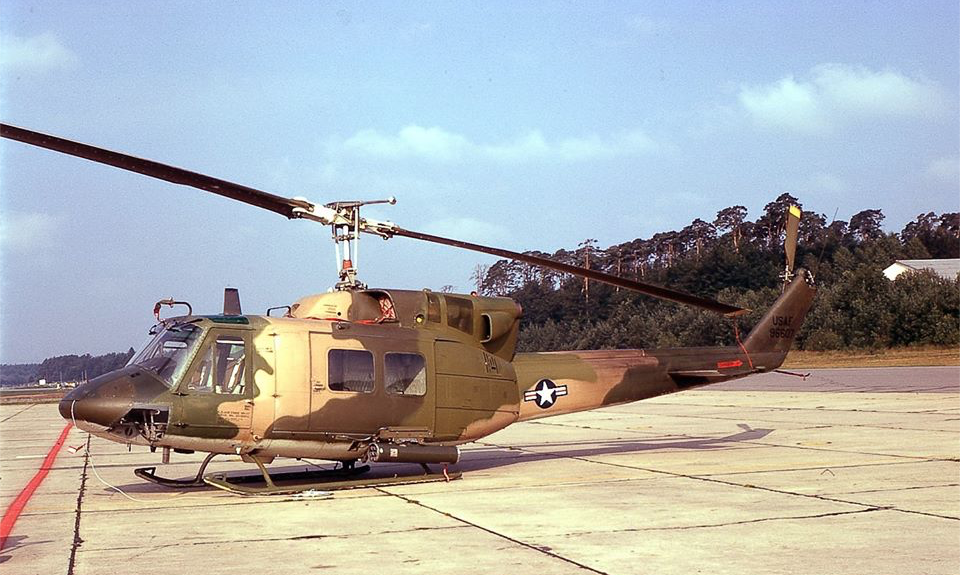
The helicopter has other improvements over the Model 205/UH-1D/H Huey. The main rotor blades have a wider chord, producing greater lift. The main transmission is rated for greater power input. The tail boom and tail rotor pylon are strengthened, and the tail rotor has been moved to the opposite side of the pylon, in a tractor configuration instead of the previous pusher configuration. The tail rotor blade rotation is reversed with the advancing blade moving upward into the down flow of the main rotor, making it more efficient. Visual differences are the streamlined nose and the reshaped “dog house” covering the twin engine installation.
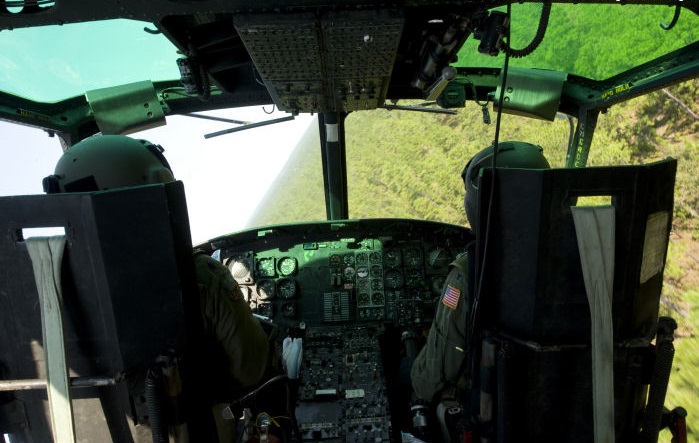
The U.S. Air Force normally operates the UH-1N with two pilots and a flight engineer, but it can be flown by a single pilot under visual weather conditions, if necessary. It is capable of transporting up to 12 passengers in addition to the three-man crew.
The Bell Helicopter Co. UH-1N Iroquois (Model 212) is 57 feet, 3 inches (17.450 meters) long, with a main rotor diameter of 48 feet, 0 inches (14.630 meters) and tail rotor diameter of 8 feet, 6 inches (2.591 meters). The overall height of the helicopter is 12 feet, 10 inches (3.912 meters) and the fuselage has a maximum width of 9 feet, 5 inches (2.870 meters). The helicopter’s empty weight is 6,032 pounds (2,736 kilograms), depending on installed equipment. The maximum takeoff weight is 10,500 pounds (4,763 kilograms).
The Pratt & Whitney Canada T400-CP-400 has a maximum continuous power rating of 1,530 shaft horsepower at 6,600 r.p.m. at Sea Level.
The helicopter’s cruise speed is 110 knots (127 miles per hour/204 kilometers per hour) and the maximum speed is 128 knots (147 miles per hour/237 kilometers per hour) at Sea Level. The UH-1N has an out-of-ground-effect hover ceiling (HOGE) of 13,000 feet (3,962 meters). The service ceiling is 21,600 feet (6,584 meters). The combat radius is 105 nautical miles (121 statute miles/194 kilometers) maximum ferry range is 565 nautical miles (650 statute miles/1,046 kilometers).
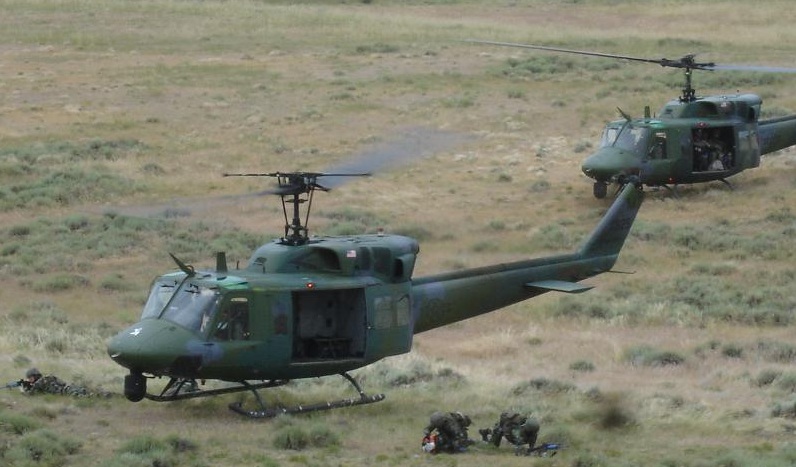
The UH-1N can be armed with GAU-16 .50-caliber machine guns or GAU-17 7.62mm “miniguns.”
The UH-1N is operated by the Air Force, the U.S. Navy and Marine Corps, as well as many foreign military services. In civil use, the Bell 212 is the most common medium lift helicopter worldwide and has been for 54 years.
Of the 79 UH-1N helicopters ordered by the U.S. Air Force in 1968, 59 remain in active service (as of September 2015). On 18 March 2024, a UH-1N assigned to the 58th Operations Group, Det 2, at Kirtland Air Force Base, New Mexico, the Air Force’s UH-1N training unit, 69-6650 logged its 20,000th flight hour.
On 24 September 2018, the U.S. Air Force announced that it would replace the UH-1N fleet with 84 Boeing/Leonardo MH-139A Grey Wolfs, with the first aircraft being delivered in 2021. In actuality, the first field-read MH-139A arrived at Malmstrom Air Force Base in Montana in March 2024.
Still in service, UH-1N 68-10772 was photographed in flight 4 May 2022 at Gowen Field, Boise, Idaho. The helicopter was painted in the Southeast Asia camouflage scheme of the 20th Special Operations Squadron, “Green Hornets.”
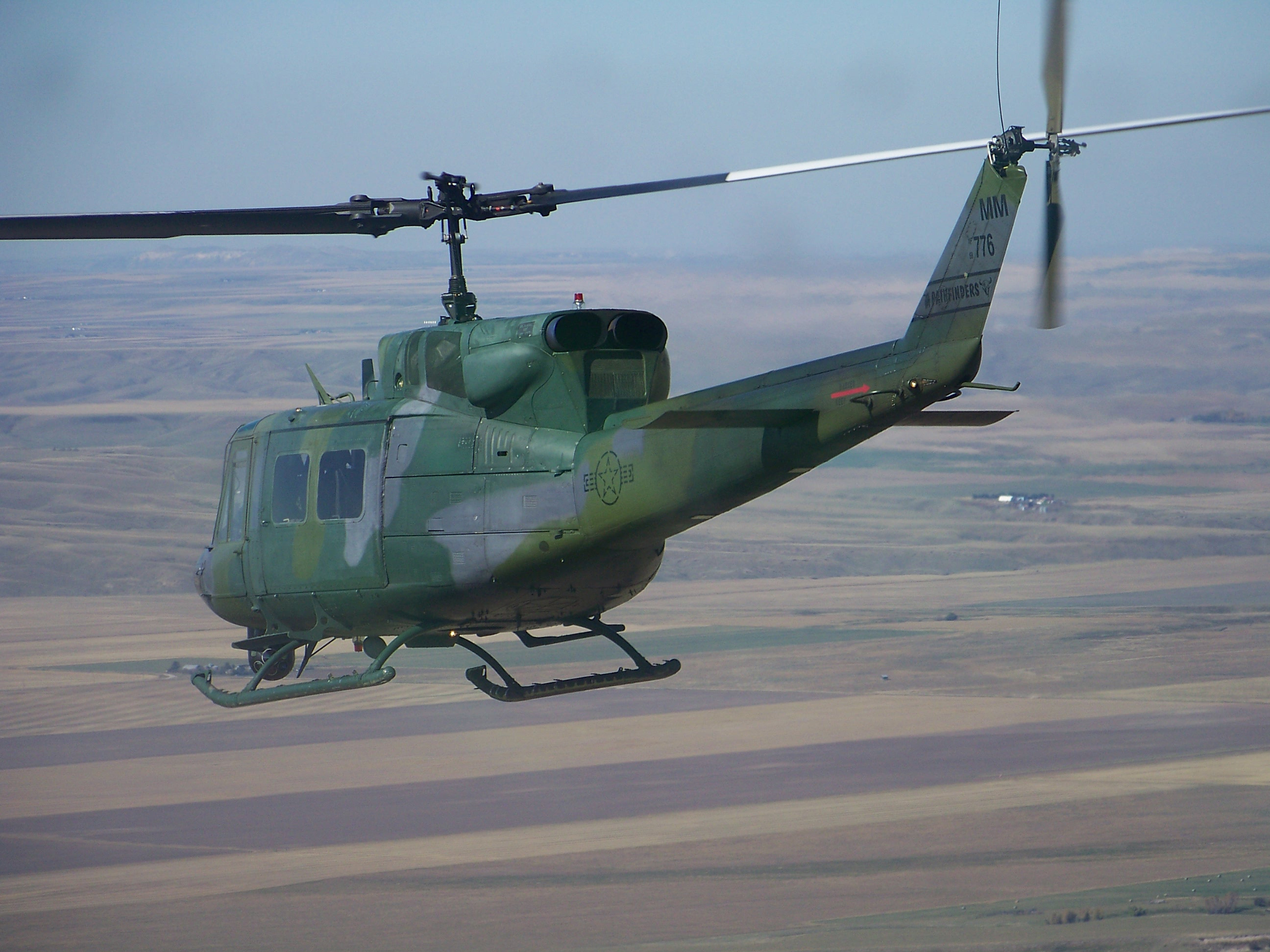
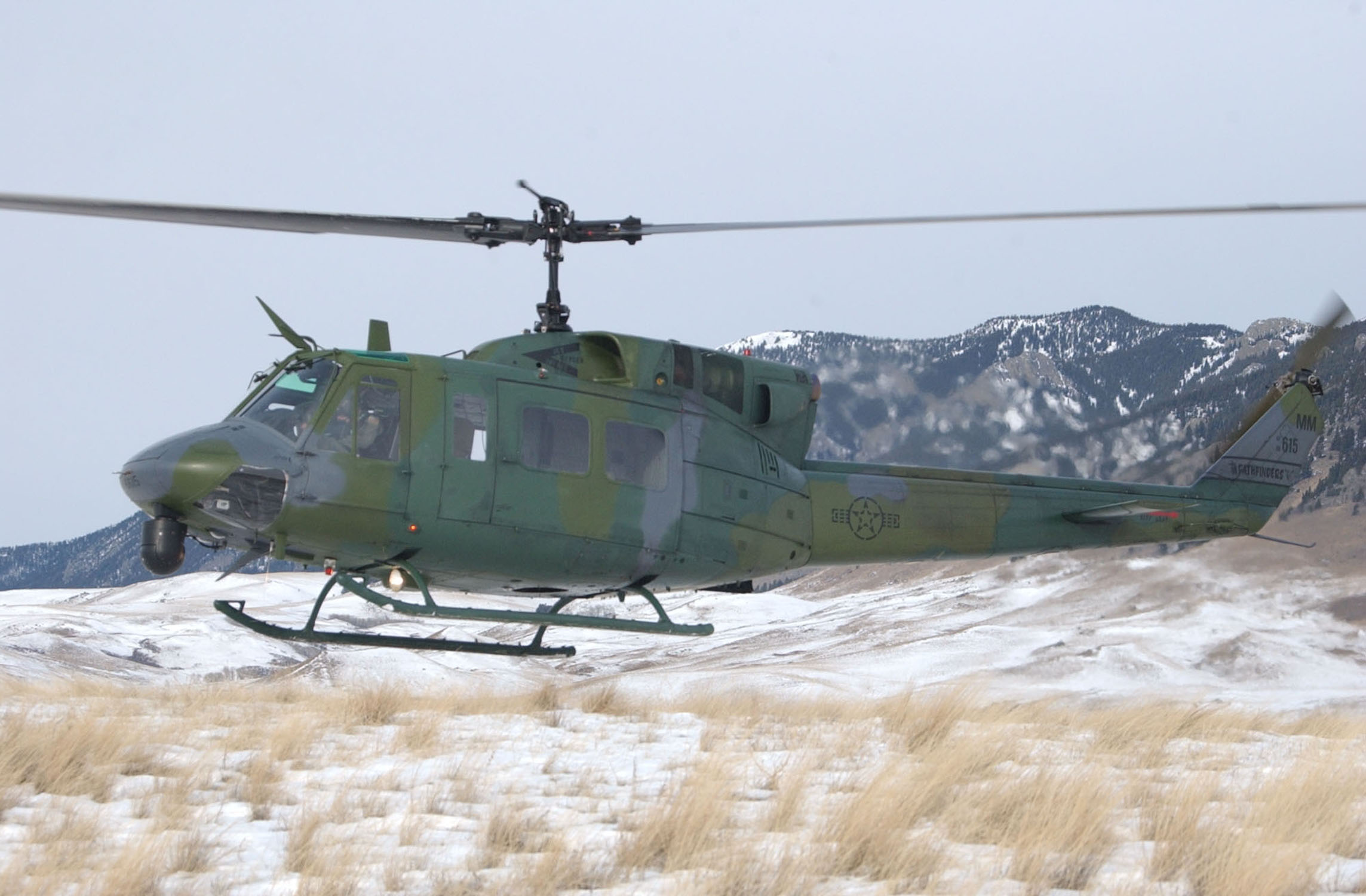
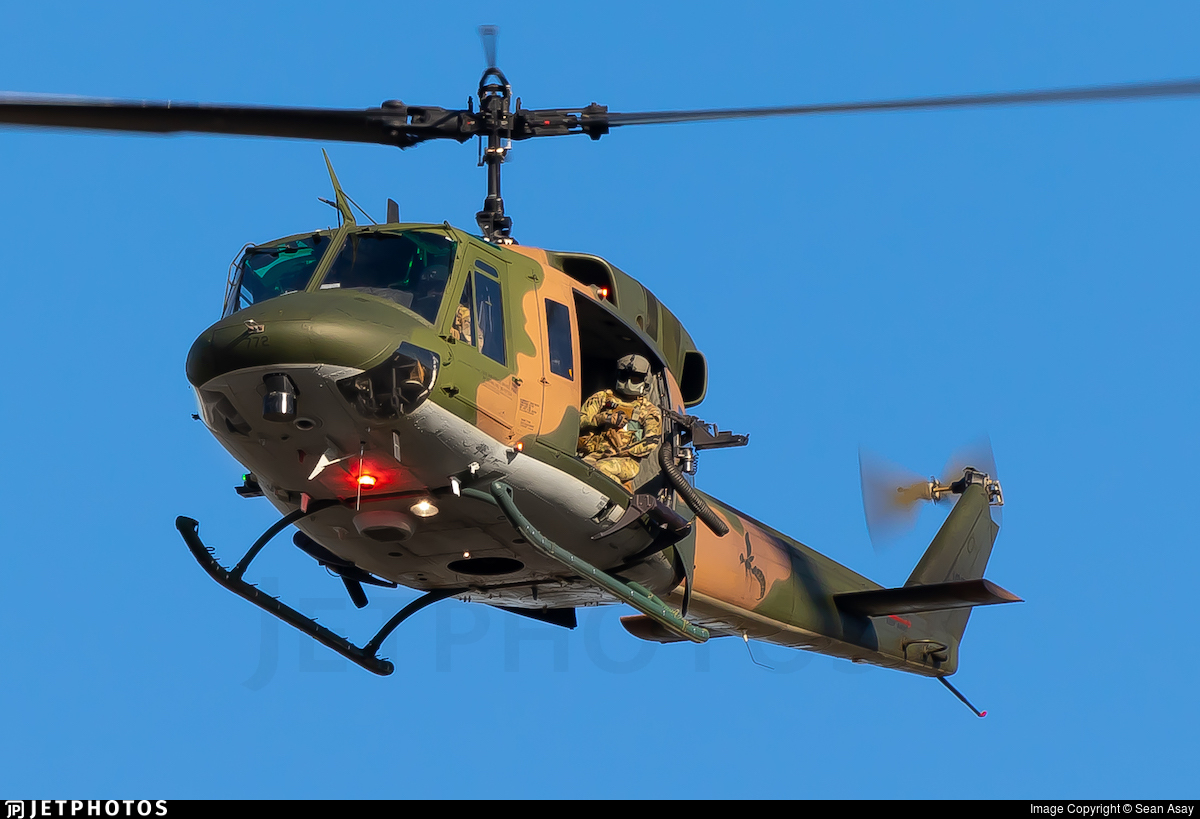
© 2024, Bryan R. Swopes